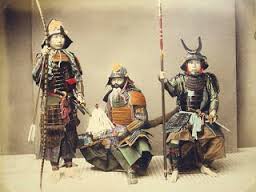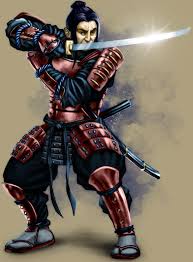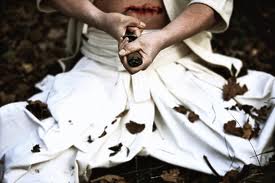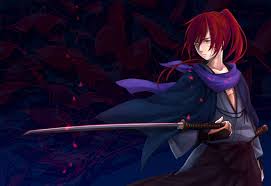Dr. V.K.Maheshwari, M.A. (Socio, Phil) B.Sc. M. Ed, Ph.D.
Former Principal, K.L.D.A.V.(P.G) College, Roorkee, India
If, now, we try to picture the Japan that died in 1853, we should remember that it may be as hard to understand, differing from us in colour and language, government and religion, manners and morals, character and ideals, literature and art. For example Hearn was more intimate with Japan than any other Western writer of his time, and yet he spoke of “the immense difficulty of perceiving and comprehending what underlies the surface of Japanese life.” ”Your information about us,” a genial Japanese essayist reminds the Occident, “is based on the meagre translations of our immense literature, if not on the unreliable anecdotes of passing travellers. . . . We Asia tics are often appalled by the curious web of facts and fancies which has been woven concerning us. We are pictured as living on the perfume of the lotus, if not on mice and cockroaches.” What follows, therefore, is a tentative approach based upon the briefest direct acquaintance to Japanese civilization and character; each student must correct it by long and personal experience. The first lesson of philosophy is that we may all be mistaken.
Theoretically at the head of the nation was the divine emperor. The actually ruling house the hereditary shogunate allowed the emperor and his court the impressive and useful fiction of uninterrupted rule. Meanwhile the shogun luxuriated in the slowly growing wealth of Japan, and assumed prerogatives normally belonging to the emperor. When he was borne through the streets in his ox-carriage or palanquin the police required every house along the route, and all the shutters of upper windows, to be closed; all fires were to be extinguished, all dogs and cats were to be locked up, and the people themselves were to kneel by the roadside with their heads upon their hands and their hands upon the ground. The shogun had a large personal retinue, including four jesters, and eight cultured ladies dedicated to entertain him without reserve. He was advised by a cabinet of twelve members: a “Great Senior,” five “Seniors” or ministers, and six “Sub-Elders” who formed a junior council. As in China, a Board of Censors supervised all administrative offices, and kept watch upon the feudal lords. These lords, or Daimyo (“Great Name”), formally acknowledged allegiance only to the emperor. Below the lords were the baronets, and below these the squires; and serving the lords were a million or more Samurai sword-bearing guards- men. In 1185, Japan began to be governed by warriors or samurai. Until this time the government had been bureaucratic in theory, but was actually aristocratic (i.e., people held certain positions because they were born to families entitled to hold those jobs). Even after 1185, civil government at the Emperors court continued and the law and the state were not changed, but a new samurai class came to power and increasingly became the real rulers of the country. Some form of military leadership remained the form of government in Japan until 1868, when a centralized bureaucratic government came into being with the Meiji Restoration. Many people think the samurai were either a rare elite force (much like Navy SEALS or the Russian Spetznaz today) or a small, tightly defined caste of noblemen. However, they were actually an entire social class. Originally, “samurai” meant “those who serve in close attendance to the nobility.” In time, the term evolved and became associated with the bushi class, middle- and upper-tier soldiers in particular.
This means there were quite a lot more of these mighty warriors than we generally assume. In fact, at the peak of their power, up to 10 percent of Japan’s population was samurai. Because of their large numbers and long influence in Japan’s history, every single Japanese person living today is said to have at least some samurai blood in them.
The basic principle of Japanese feudal society was that every gentleman was a soldier, and every soldier a gentleman; here lay the sharpest difference between Japan and that pacific China which thought that every gentleman should be a scholar rather than a warrior. As the essential nobility of their era, members of the samurai class were far more than mere warriors. The majority of samurai were very well-educated. At a time when very few Europeans could read, the level of samurai literacy was extremely high. They were also skilled in mathematics.
Bushido dictated that a samurai strives to better himself in a multitude of ways, including those unrelated to combat. This is why the samurai class participated in a number of cultural and artistic endeavours. Poetry, rock gardens, monochrome ink paintings, and the tea ceremony were common aspects of samurai culture. They also studied subjects such as calligraphy, literature, and flower arranging.
Though they loved, and partly formed themselves on, such swashbuckling novels as the Chinese Romance of the Three Kingdoms, the Samurai scorned mere learning, and called the literary savant a book-smelling sot. They had many privileges: they were exempt from taxation, received a regular stipend of rice from the baron whom they served, and performed no labour except occasionally to die for their country. They looked down upon love as a graceful game, and preferred Greek friendship; they made a business of gambling and brawling, and kept their swords in condition by paying the executioner to let them cut off condemned heads.
The strangest thing about the samurai is probably their weird-looking, ornate armour. However, each piece of it was functional. The samurai armour, unlike the armour worn by European knights, was always designed for mobility. A good suit of armour had to be sturdy, yet flexible enough to allow its wearer free movement in the battlefield. The armour was made of lacquered plates of either leather or metal, carefully bound together by laces of leather or silk. The arms were protected by large, rectangular shoulder shields and light, armoured sleeves. The right hand was often left without a sleeve to allow maximum movement.
The strangest and most convoluted part of the armour, the kabuto helmet, also served its purpose. Its bowl was made of riveted metal plates, while the face and brow were protected by a piece of armour that tied around behind the head and under the helmet. The most famous feature of the helmet was its Darth Vader–like neck guard (Darth Vader’s design was actually influenced by samurai helmets). It defended the wearer from arrows and swords coming from all angles. Many helmets also featured ornaments and attachable pieces, including a moustachioed, demonic mengu mask that both protected the face and frightened the enemy. A leather cap worn underneath the helmet provided much-needed padding.
Although the samurai armour went through significant changes over time, its overall look always remained fairly consistent to the untrained eye. It was so well-made and effective that the US Army actually based the first modern flak jackets on samurai armour.
As soldiers, samurai employed a number of different weapons. They originally carried a sword called a “chokuto,” which was essentially a slimmer, smaller version of the straight swords later used by medieval knights.
As sword-making techniques progressed, the samurai switched to curved swords, which eventually evolved into the katana. The katana is perhaps the most famous sword type in the world and certainly the most iconic of all samurai weapons. Bushido (the samurai code) dictated that a samurai’s soul was in his katana, which made it the most important weapon he carried. Katanas were usually carried with a smaller blade in a pair called “daisho,” which was a status symbol used exclusively by the samurai class.
While some samurai did indeed fight with nothing but their katana, most took a more practical approach. Swords were far from the only weapon they had at their disposal. They commonly used the yumi, a longbow they practiced religiously with. Spears became important as personal bravery on the battlefield was eventually replaced by meticulous planning and tactics. When gunpowder was introduced in the 16th century, the samurai abandoned their bows in favour of firearms and cannons. Their long-distance weapon of choice was the tanegashima, a flintlock rifle that became popular among Edo-era samurai and their footmen. Cannons and other gunpowder weapons were also commonly employed.
His sword, in lyeyasu’s famous phrase, was “the soul of the Samurai” and found remarkably fre- quent expression despite prolonged national peace. He had the right, ac- cording to lyeyasu,” to cut down at once any member of the lower classes who offended him; and when his steel was new and he wished to make trial of it, he was as likely to try it on a beggar as on a dog.” “A famous swordsman having obtained a new sword,” says Longford, “took up his place by the Nihon Bashi (the central bridge of Yedo) to await a chance of testing it. By and by a fat peasant came along, merrily drunk, and the swordsman dealt him the Nashi- e wari (pear-splitter) so effectively that he cut him right through from the top of his head down to the fork. The peasant continued on his way, not knowing that anything had happened to him, till he stumbled against a coolie, and fell in two neatly severed pieces.” Of such trivial consequence is the difference, so troublesome to philosophers, between the One and the Many.
The imposing armour and weaponry makes samurai seem gigantic, and they’re often depicted as quite large and well-built in pop culture. This could not be farther from the truth. In reality, most samurai were quite tiny—a 16th century samurai was usually very slim and ranging from 160 to 165 centimetres (5’3″ to 5’5″) in height. For comparison, European knights of the same period probably ranged from 180 to 196 centimetres (6′ to 6’5″).
What’s more, the noble samurai might not have been as “pure” as the notoriously race-conscious Japanese would like. Compared to the average Japanese person, members of the samurai class were noticeably hairier and their skin was lighter. Their profile—namely, the bridge of their nose—was also distinctly more European. In an ironic twist, this seems to indicate that the samurai actually descend from an ethnic group called the Ainu, who are considered inferior by the Japanese and are often the subject of discrimination.
The Samurai had other graces than this jolly despatch with which they transformed time into eternity. They accepted a stern code of honour Bushido, (A word coined by the late Inazo Nitobe.) or the Way of the Knight whose central theory was its definition of virtue: “the power of deciding upon a certain course of conduct in accordance with reason, without wavering; to die when it is right to die, to strike when it is right to strike.” They were tried by their own code, but it was more severe than the common law.” They despised all material enterprise and gain, and refused to lend, borrow or count money; they seldom broke a promise, and they risked their lives readily for any- one who appealed to them for just aid. They made a principle of hard and frugal living; they limited themselves to one meal a day, and accustomed themselves to eat any food that came to hand, and to hold it. They bore all suffering silently, and suppressed every display of emotion; their women were taught to rejoice when informed that their husbands had been killed on the battlefield. They recognized no obligation except that of loyalty to their superiors; this was, in their code, a higher law than parental or filial love. It was a common thing for a Samurai to disembowel himself on the death of his lord, in order to serve and protect him in the other world. When the Shogun lycmitsu was dying in 1651 he reminded his prime minister, Hotto, of this duty of junshi, or “following in death”; Hotto killed himself without a word, and several subordinates imitated him. When the Emperor Mutsuhito went to his ancestors in 1912 General Nogi and his wife committed suicide in loyalty to him. Not even the traditions of Rome’s finest soldiers bred greater courage, asceticism and self-control than were demanded by the code of the Samurai.
The final law of Bushido was hara-kiri suicide by disembowelment. The occasions when this would be expected of a Samurai were almost beyond count and the practice of it so frequent that little notice was taken of it. If a man of rank had been condemned to death he was allowed, as an expression of the emperor’s esteem, to cut through his abdomen from left to right and then down to the pelvis with the small sword which he always carried for this purpose. If he had been defeated in battle, or had been compelled to surrender, he was as like as not to rip open his belly. (Hara-kiri means belly-cutting; it is a vulgar word seldom used by the Japanese, who prefer to call it seppuku.) One of the most terrifying things about the way of the samurai is seppuku.It is the gruesome suicide a samurai must perform if he fails to follow bushido or is likely to be captured by enemy. Seppuku can be either a voluntary act or a punishment. Either way, it is generally seen as an extremely honourable way to die.
Hara-kiri was forbidden to women and plebeians; but women were allowed to commit jigaki i.e M they were permitted, as a protest against an offense, to pierce the throat with a dagger, and to sever the arteries by a single thrust. Every woman of quality received technical training in the art of cutting her throat, and was taught to bind her lower limbs together before killing herself, lest her corpse should be found in an immodest position.
Most people are familiar with the “battlefield” version of seppuku, which is a quick and messy affair. It is performed by piercing the stomach with a short blade and moving it from left to right, until the performer has sliced himself open and essentially disembowelled himself. At this point, an attendant—usually a friend of the samurai—decapitates the disembowelled samurai with a sword (otherwise, dying would be an extremely long and painful process). However, the full-length seppuku is a far more elaborate process.
A formal seppuku is a long ritual that starts with a ceremonial bathing. Then, the samurai is dressed in white robes and given his favourite meal (much like the last meal of death row prisoners). After he has finished eating, a blade will be placed on his empty plate. He will then write a death poem, a traditional tanka text where he expresses his final words. After the poem is finished, he grabs the blade, wraps a cloth around it (so it won’t cut his hand), and does the deed. Again, the attendant finishes him by cutting his head off. However, he aims to leave a small strip of flesh in the front so that the head will fall forward and remain in the dead samurai’s embrace. This is also so that the head will not accidentally fly at the spectators, which would cause the attendant eternal shame.
While “samurai” is a strictly masculine term, the Japanese bushi class (the social class samurai came from) did feature women who received similar training in martial arts and strategy. These women were called “Onna-Bugeisha,” and they were known to participate in combat along with their male counterparts. Their weapon of choice was usually the naginata, a spear with a curved, sword-like blade that was versatile, yet relatively light.
Since historical texts offer relatively few accounts of these female warriors (the traditional role of a Japanese noblewoman was more of a homemaker), we used to assume they were just a tiny minority. However, recent research indicates that Japanese women participated in battles quite a lot more often than history books admit. When remains from the site of the Battle of Senbon Matsubaru in 1580 were DNA-tested, 35 out of 105 bodies were female. Research on other sites has yielded similar results.
When, in 1895, Japan yielded to European pressure and abandoned Liaotung, forty military men committed hara-kiri in protest. During the war of 1905 many officers and men in the Japanese navy killed themselves rather than be captured by the Russians. If his superior did something offensive to him, the good Samurai might gash himself to death at his master’s gate. The art of seppuku the precise ritual of ripping was one of the first items in the education of Samurai youth; and the last tribute of affection that could be paid to a friend was to stand by him and cut off his head as soon as he had carved his paunch.” Out of this training, and the traditions bound up with it, has come some part of the Japanese soldier’s comparative fearlessness of death.
Murder, like suicide, was allowed occasionally to replace the law. Feudal Japan economized on policemen not only by having many bonzes, but by allowing the son or brother of a murdered man to take the law into his own hand; and this recognition of the right of revenge, though it begot half the novels and plays of Japanese literature, intercepted many crimes. The Samurai, however, usually felt called upon to commit hara-kiri after exercising this privilege of personal revenge. When the famous Forty- seven Ronin (“Wave Men” i.e., unattached Samurai), to avenge a death, had cut off the head of Kotsuke no Suke with supreme courtesy and the most refined apologies, they retired in dignity to estates named by the Shogun, and neatly killed themselves (1703). Priests returned Kotsuke’s head to his retainers, who gave them this simple receipt:
Memorandum:
Item: One head.
Item: One paper parcel.
The above articles are acknowledged to have been received.
(Signed) Sayada Mogobai
Saito Kunai
This is probably the most famous and typical event in the history of Japan, and one of the most significant for the understanding of Japanese character. Its protagonists are still, in the popular view, heroes and saints; to this day pious hands deck their graves, and incense never ceases to rise before their resting place.
Towards the end of lyeyasu’s regency two brothers, Sakon and Naiki, twenty-four and seventeen years of age respectively, tried to kill him because of wrongs which they felt that he had inflicted upon their father. They were caught as they entered the camp, and were sentenced to death, lyeyasu was so moved by their courage that he commuted their sentences to self-disembowelment; and in accord with the customs of the time he included their younger brother, the eight-year-old Hachimaro, in this merciful decree. The physician who attended the boys has left us a description of the scene:
When they were all seated in a row for final despatch, Sakon turned to the youngest and said “Go thou first, for I wish to be sure that thou doest it right.” Upon the little one’s replying that, as he had never seen seppuku performed, he would like to sec his brothers do it, and then he could follow them, the older brothers smiled between their tears: “Well said, little fellow. So canst thou well boast of being our father’s child.” When they had placed him between them, Sakon thrust the dagger into the left side of his abdomen and said “Look, brother! Dost understand now? Only, don’t push the dagger too far, lest thou fall back. Lean forward, rather, and keep thy knees well composed.” Naiki did likewise, and said to the boy “Keep thine eyes open, or else thou mayst look like a dying woman. If thy dagger feels anything within and thy strength fails, take courage, and double thy effort to cut across.” The child looked from one to the other, and when both had expired, he calmly half nuded himself and followed the example set him on either hands? ,
References:
ASTON, W. G.: History of Japanese Literature. New York, 1899.
BRINEXEY, CAPT. F.: Japan: Its History, Arts and Literature. 8v. Boston and Tokyo.
CHAMBERLAIN, B. H.: Things Japanese. London, 1905.
GOWEN, H. H.: Outline History of Japan. New York, 1927.
HEARN, LAFCADIO: Japan: an Interpretation. New York, 1928.
MURDOCH, JAS.: History of Japan. 3V. London, 1925
NITOB, INAZO: Bushido: The Soul of Japan. New York, 1905.
OKAKURA-KAKUSO: The Book of Tea. New York, 1912.
REDESDALE, LORD: Tales of Old Japan. London, 1928.
WILL DURANT: Our Oriental Heritage. Simon and Schuster. New York 1954





